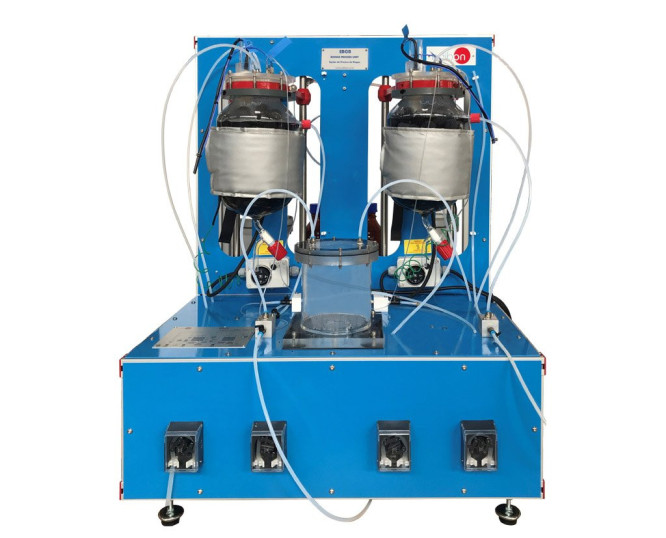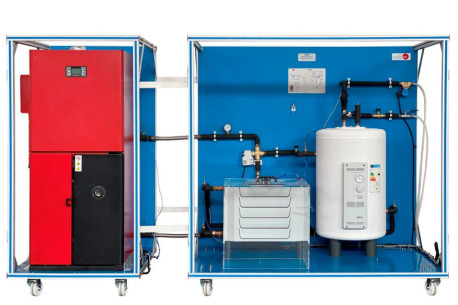The Biogas Process Unit, "EBGB", is supplied with two packed anaerobic digesters. In this way, the user can work either in only one stage or in two stages, separating the different phases of the digestion process (the processes of hydrolysis, acidogenesis and acetogenesis would take place in the first digester, and the methanogenesis in the second digester).
Both digesters have a heating blanket that allows to regulate both the appropriate temperature for each part of the process and the operation with different ranges depending on the used microorganisms. Thus, it can operate at the psychrophilic range (room temperature), mesophilic range (temperatures around 35ºC) or thermophilic range (temperatures around 55ºC).
The unit has four peristaltic pumps which enable the propelling of both the supply to be introduced in the digester and the acid and the base (introduced in two vessels located at the rear side) in order to adjust and control thoroughly the pH in each stage of the process. In case of working in an anaerobic digestion in two stages, one of the pumps carries the product from one of the digesters to the other, passing through a buffer tank which collects the excess of flow from the first reactor. The control of these pumps allows to know the different flows with which the unit is working.
Two volumetric tanks are also included for the storage and volume measurement of the generated biogas. The generated biogas flows through a pipe from the upper side of the digesters to these tanks, where the biogas volume is measured by means of a water displacement. Such tanks have two parts: the upper side is where the generated biogas is collected and the second part, smaller than the first one and located below it, is used to collect the displaced water.
Each digester has a temperature sensor and a pH meter. Their function is to follow the whole process and study the influence of the different controlling parameters in the anaerobic digestion.
Finally, the volumetric tanks, by their upper side, enable the flowing of the collected biogas through a pipe and its passing through a methane sensor (CH4) which allows to know the methane concentration in such current and this way, the biogas quality depending on four the physical-chemical conditions under which the anaerobic digestion is developed can be determined, as well as its value as a renewable energy source.
The unit is supplied with the suitable sensors and instrumentation for the most representative parameters measurements and controls (electronic console).
 Настройки cookie
Настройки cookie















